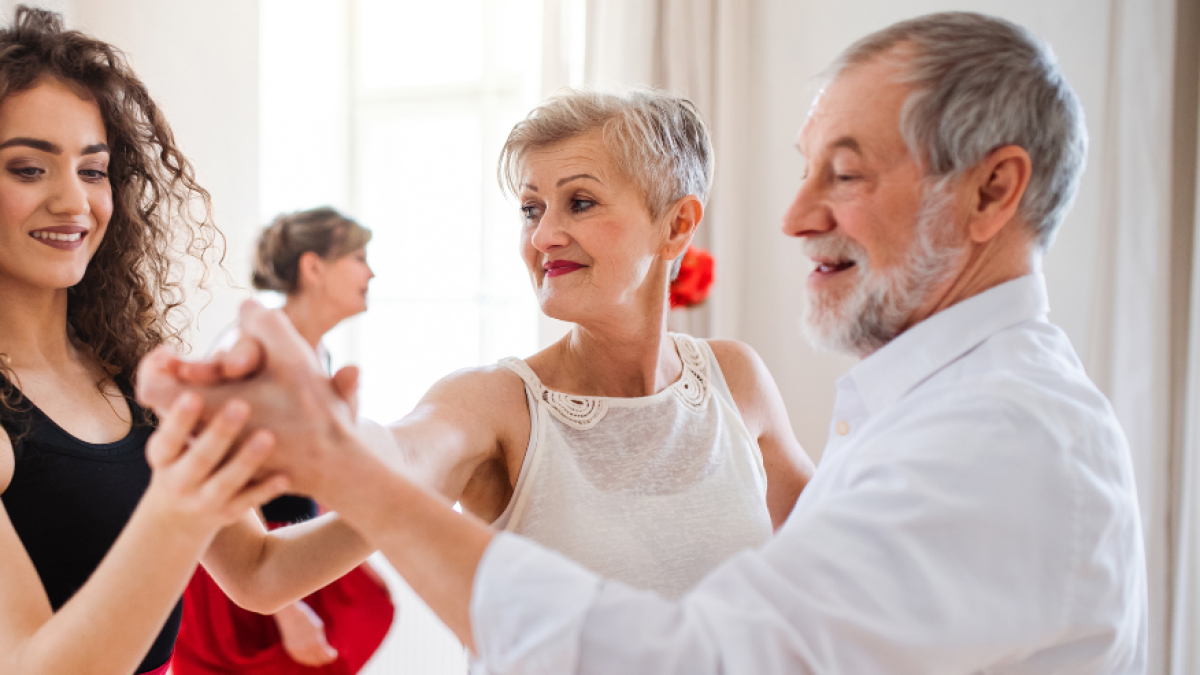Dancing Through Parkinson's: How Movement Brings Joy and Healing

Dance has emerged as a powerful ally in managing Parkinson's disease, offering both physical and emotional benefits that extend far beyond the dance floor. As a physical therapist and dancer working directly with the Parkinson's community, I've witnessed firsthand the transformative power of dance in improving quality of life.
Dance provinces a multisensory engagement, combining physical movement with cognitive tasks. The beat of the music, being an external cue, can help individuals with Parkinson’s move with more ease. Here are some other key benefits of dance for people with Parkinson’s Disease:
Physical Improvements
Enhanced balance and coordination
Improved flexibility and range of motion
Better posture and gait
Increased strength and endurance
Cognitive Benefits
Improved memory through learning dance sequences
Enhanced focus and concentration
Better mind-body connection
Stimulated neural plasticity
Social and Emotional Impact
Reduced isolation through group participation
Increased confidence and self-expression
Joy and emotional release through movement
Stronger sense of community
Research has consistently shown that tango is particularly effective in improving gait patterns for individuals with Parkinson's disease. The basic pattern of tango naturally mirrors and reinforces the components of functional walking: weight shifting, precise foot placement, and dynamic balance control. Studies demonstrate that tango participants show significant improvements in both forward and backward walking, essential activities that often become challenging with Parkinson's progression. What makes tango uniquely beneficial is its emphasis on movement initiation, sudden changes in direction, and variable rhythms – all critical aspects that directly address common gait impairments in Parkinson's disease. The dance form requires participants to maintain an upright posture while executing deliberate steps, promoting better balance and reducing the risk of falls. Furthermore, the partner-based nature of tango provides additional sensory cues and feedback, helping participants develop better spatial awareness and movement control.
So if you have a friend or family member that has Parkinson’s Disease, consider looking up movement classes in your area for them. Here are some places to start your search:
Parkinson's Association of the Rockies
Michael J. Fox Exercise Resources
Studies:
Docu Axelerad A, Stroe AZ, Muja LF, Docu Axelerad S, Chita DS, Frecus CE, Mihai CM. Benefits of Tango Therapy in Alleviating the Motor and Non-Motor Symptoms of Parkinson's Disease Patients-A Narrative Review. Brain Sci. 2022 Mar 27;12(4):448. doi: 10.3390/brainsci12040448. PMID: 35447980; PMCID: PMC9031475.
Rabini, G., Meli, C., Prodomi, G. et al. Tango and physiotherapy interventions in Parkinson’s disease: a pilot study on efficacy outcomes on motor and cognitive skills. Sci Rep 14, 11855 (2024). https://doi.org/10.1038/s41598-024-62786-6
I have read and agree to the terms & conditions. We will not spam you.
 Dr. Chelsea Moehlenbrock
Dr. Chelsea Moehlenbrock 